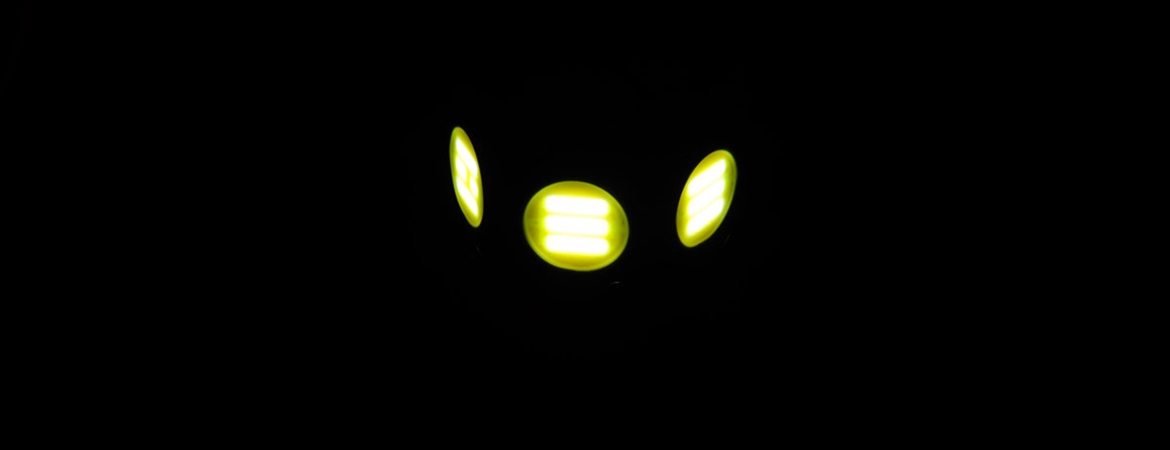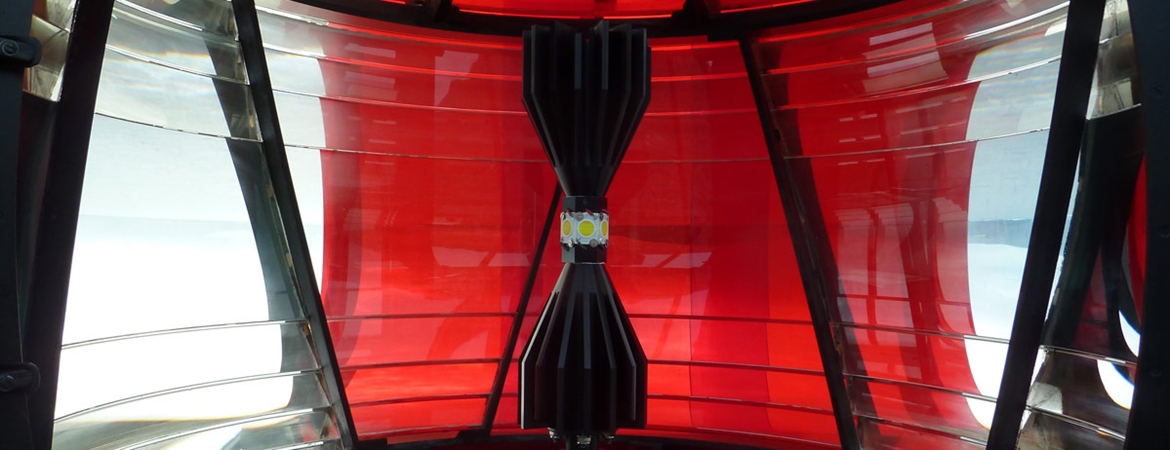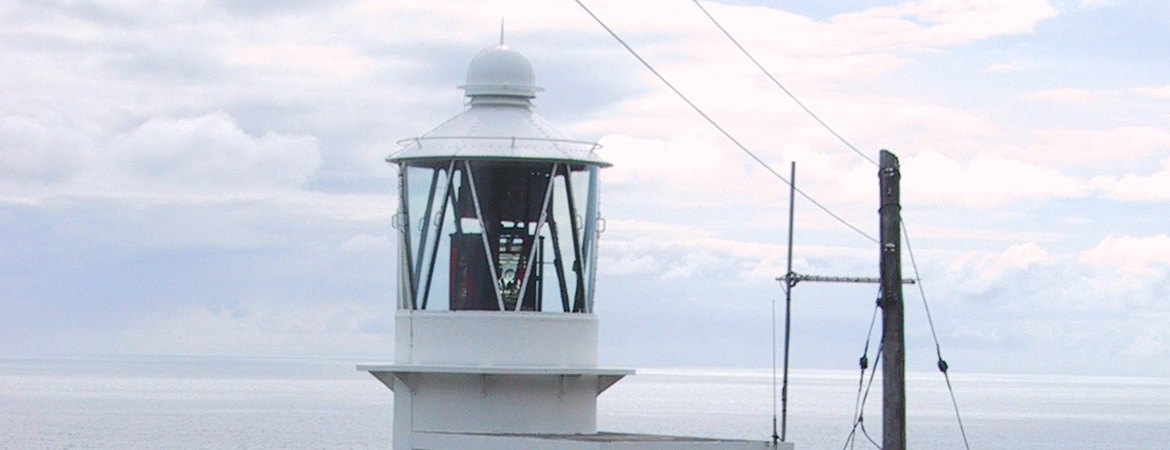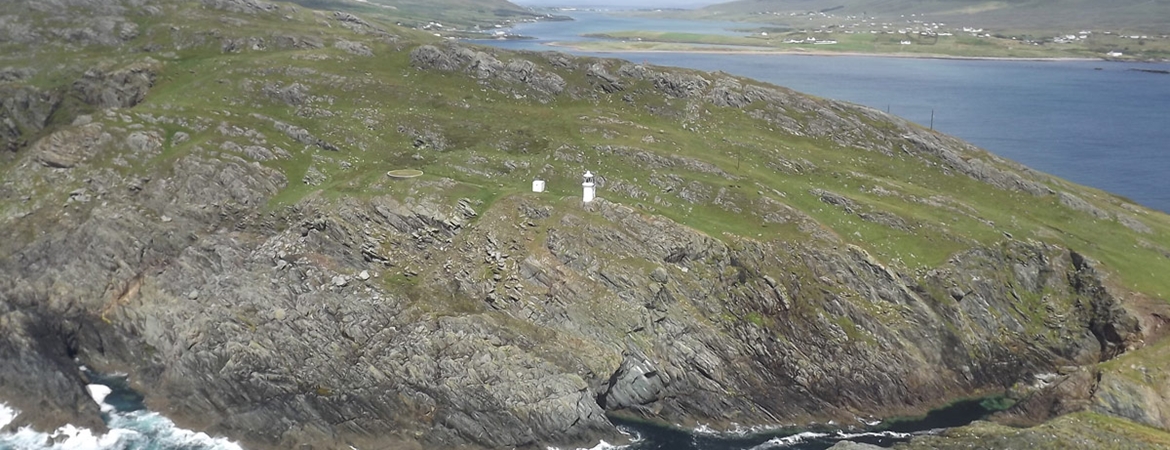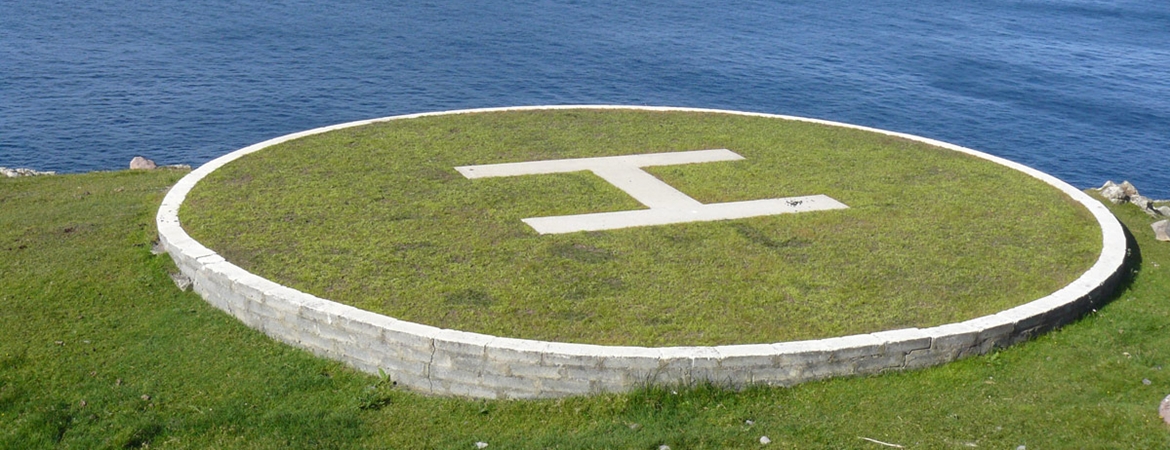Achillbeg Lighthouse was established on the 28th September 1965, to coincide with the closure of the lighthouse on Clare Island.
The Clare Island Lighthouse had dated from 1806. Because of its height above mean high water springs the light was frequently obscured by fog or low cloud. The suitability of Clare Island was questioned by the Commissioners' Inspecting Committee in 1863 and 1867 in view of the establishment of the new light at Blackrock Mayo. Achillbeg was mentioned at that time as a suitable alternative but nothing was actually done as sanction was not forthcoming from Trinity House. Achillbeg was again considered in 1871, 1873 and 1909, but eventually it was decided to refurbish the Clare Island light. This was done in 1914.
Plans to automate Clare Island were set in motion in 1958, but following careful consideration, the decision was reached to abandon it in favour of a new lighthouse on Achillbeg.
A possible site for a new lighthouse on Achillbeg Island was identified in March 1960, and the project was approved in principle by the (UK) Ministry of Transport on 5 May. Work proceeded with designing the lighthouse and apparatus. Following a survey it was concluded that the site originally selected was unsuitable and another site120 feet nearer the cliff edge and 30 feet lower was selected. This site was owned by 22 tenants-in-common. The Commissioners decided, on legal advice, that it was unnecessary to go through the lengthy and expensive formalities of compulsory acquisition of the site but they did apply to the Irish Land Commission for a right of way to the site. The Land Commission granted the right of way on 11 December 1963.
Work on constructing the lighthouse began in May 1964. Materials were landed on the island by Service Tender and transported to the site by a tractor purchased for the job. The tractor was brought to the island on a raft built by Service Tradesman Michael Keane. The lighthouse was built by the Commissioners' building workforce assisted by a number of islanders. Donkeys were also supplied by islanders for transport.
Achillbeg Lighthouse is a square concrete building with a 9 metre high tower or murette on which the lantern is mounted. Power for the light is provided by mains electricity. In the event of a mains failure during the hours of darkness a standby generator takes over.
The light is sectored red and white and has a character of one flash every 5 seconds. The sectors are as follows:
Red 262° - 281°
White 281° - 342°
Red 342° - 060°
White 060° - 092°
Red 092° - 099° (intensified red sector over Bills Rock)
White 099° - 118° (obscured by Clare Island and the Bills Rock)
The light on Clare Island Lighthouse was extinguished for the last time at sunrise on 28 September 1965. Achillbeg Lighthouse was inaugurated by Ernest Benson, Chairman of the Commissioners of Irish Lights, at sunset on the same day.
Originally the station was monitored via a UHF radio link to the Attendant's home. In 1991 Achillbeg was linked to the Remote Control and Monitoring System based at Irish Lights Dun Laoghaire.
A helicopter landing pad for Achillbeg Lighthouse was built in 1998.
The Clare Island Lighthouse had dated from 1806. Because of its height above mean high water springs the light was frequently obscured by fog or low cloud. The suitability of Clare Island was questioned by the Commissioners' Inspecting Committee in 1863 and 1867 in view of the establishment of the new light at Blackrock Mayo. Achillbeg was mentioned at that time as a suitable alternative but nothing was actually done as sanction was not forthcoming from Trinity House. Achillbeg was again considered in 1871, 1873 and 1909, but eventually it was decided to refurbish the Clare Island light. This was done in 1914.
Plans to automate Clare Island were set in motion in 1958, but following careful consideration, the decision was reached to abandon it in favour of a new lighthouse on Achillbeg.
A possible site for a new lighthouse on Achillbeg Island was identified in March 1960, and the project was approved in principle by the (UK) Ministry of Transport on 5 May. Work proceeded with designing the lighthouse and apparatus. Following a survey it was concluded that the site originally selected was unsuitable and another site120 feet nearer the cliff edge and 30 feet lower was selected. This site was owned by 22 tenants-in-common. The Commissioners decided, on legal advice, that it was unnecessary to go through the lengthy and expensive formalities of compulsory acquisition of the site but they did apply to the Irish Land Commission for a right of way to the site. The Land Commission granted the right of way on 11 December 1963.
Work on constructing the lighthouse began in May 1964. Materials were landed on the island by Service Tender and transported to the site by a tractor purchased for the job. The tractor was brought to the island on a raft built by Service Tradesman Michael Keane. The lighthouse was built by the Commissioners' building workforce assisted by a number of islanders. Donkeys were also supplied by islanders for transport.
Achillbeg Lighthouse is a square concrete building with a 9 metre high tower or murette on which the lantern is mounted. Power for the light is provided by mains electricity. In the event of a mains failure during the hours of darkness a standby generator takes over.
The light is sectored red and white and has a character of one flash every 5 seconds. The sectors are as follows:
Red 262° - 281°
White 281° - 342°
Red 342° - 060°
White 060° - 092°
Red 092° - 099° (intensified red sector over Bills Rock)
White 099° - 118° (obscured by Clare Island and the Bills Rock)
The light on Clare Island Lighthouse was extinguished for the last time at sunrise on 28 September 1965. Achillbeg Lighthouse was inaugurated by Ernest Benson, Chairman of the Commissioners of Irish Lights, at sunset on the same day.
Originally the station was monitored via a UHF radio link to the Attendant's home. In 1991 Achillbeg was linked to the Remote Control and Monitoring System based at Irish Lights Dun Laoghaire.
A helicopter landing pad for Achillbeg Lighthouse was built in 1998.

